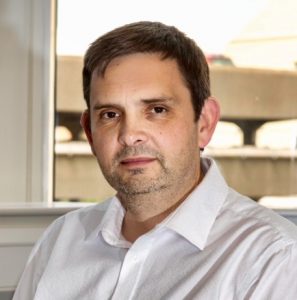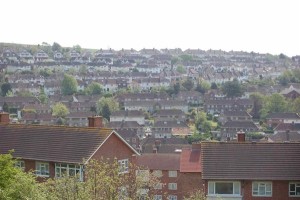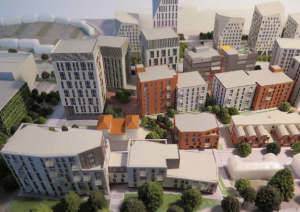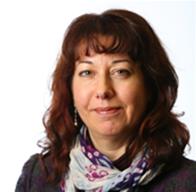Housing is the top priority for the man expected to become the new leader of Brighton and Hove City Council this afternoon (Thursday 17 May).

Councillor Daniel Yates is well aware that he has a short amount of time to make a visible impact on a long-term problem.
But with a year until the next local elections, he hopes to show that progress is being made on “housing, accommodation and space”.
It’s not just building new homes, he said, but the right homes in the right place, whether it’s housing for families, dedicated student flats or places for people sleeping rough.
Given his three years chairing the Health and Wellbeing Board at a time of continuing change, it’s little surprise that he also plans to focus on health and social care.
And a third priority will be “social value”. He aims to ensure that the big public sector organisations in and around Brighton and Hove spend more of their budgets in the local area.
Dan Yates, 45, one of three Labour councillors for Moulsecoomb and Bevendean, lives in his ward and works for the National Health Service.
He trained and practised as a physiotherapist although he currently works as a manager for Western Sussex Hospitals.
He went part-time on becoming a councillor in 2015 – most younger councillors have a job outside politics – and he will reduce his NHS hours further while leader.
While he said that he was not a career politician, he previously served as a councillor in neighbouring Adur, where he became opposition leader. And he stood for Parliament in East Worthing and Shoreham.
Councillor Yates appears to have remained on good terms with the different groupings within Labour – a feat that has not proved easy for everyone.
Yet chairing the Health and Wellbeing Board has required a degree of pragmatism in a policy area where certain ideals are held dear and campaigners have been vocal. Perhaps even those with concerns appreciate how little room for manoeuvre he has sometimes had.
The NHS seems to be in the midst of further reorganisation as the Sustainability and Transformation Partnership (STP) takes shape along with other new related organisations.

And more locally, the council is merging some of its functions with the Brighton and Hove Clinical Commissioning Group (CCG).
So maybe it’s little surprise to hear Councillor Yates say that he intends to prioritise “stabilising the health and social care system” in the coming year as the flux continues.
He spoke about “wrap-around care”, where care packages follow the patient, and said: “GPs, community nurses and social workers all need to be working better together.”
This has increasingly been spoken about as an aspiration by politicians, officials and clinicians. Can he provide the right political leadership to bring about visible progress?
On the home front he has been vocal in challenging plans to convert family homes in his ward into shared houses, known as HMOs (houses in multiple occupation). His ward includes a growing number of Brighton and Sussex University students.
But aside from objecting case by case, he looked at how council policy could be altered to protect Brighton’s much-needed family homes. And what the universities and others could do to accommodate the booming student numbers.
“It’s not that we have a failed market in the city,” he said. “There’s a turnover of property and we are seeing buildings go up. We need to provide spaces for business too – and places to learn.”
For the first time in generations, the council was building new homes, he said. Aand with a number of cranes dotted round the area, developers were being encouraged by signs that Brighton was “open for business”.

A crucial test will be the joint venture to build 1,000 homes in partnership with Hyde, the housing association. Plans for the first three sites – for hundreds of homes – have yet to be shared publicly.
Hyde’s track record of spending in Brighton and Hove and the Greater Brighton “city region” fit his emphasis on “social value”.
New councillor Nancy Platts is due to the given day to day responsibility for “driving the social value agenda”.
In Preston, he said, the results had been impressive – and they would be looking at ways to keep more of the £1 billion (a rough estimate) spent by the public sector in Brighton and Hove in the local economy.
He said: “The advantage of spending more with local businesses is that it helps to support local jobs.”
Contracts might have to be offered with a smaller headline value, for example, to make it easier for smaller, local firms to bid for and win work from the council, police, universities and NHS.
“It is realistic,” he said. “Preston has shown it.”
With some big projects now under way – Circus Street and Preston Barracks, for example – progress was needed on others such as the Waterfront, King Alfred and Anston House.

Councillor Yates said: “We’ve got to become a less inward-looking city. We’ve got to develop closer relationships with our partners outside the city … in London, the ports.
“We’ve got to ensure the city boundaries are not the boundaries for our ambitions.”








It would be nice if he actually managed to do something about the Anston House site in Preston Park. Are the developers “First Base” just sitting on the site waiting to sell it to someone else at a massive profit? I mean First Base did get full planning permission in December 2016 and its now June 2018. How long does it take to start building? There should be a 12 month expiry on planning permissions.